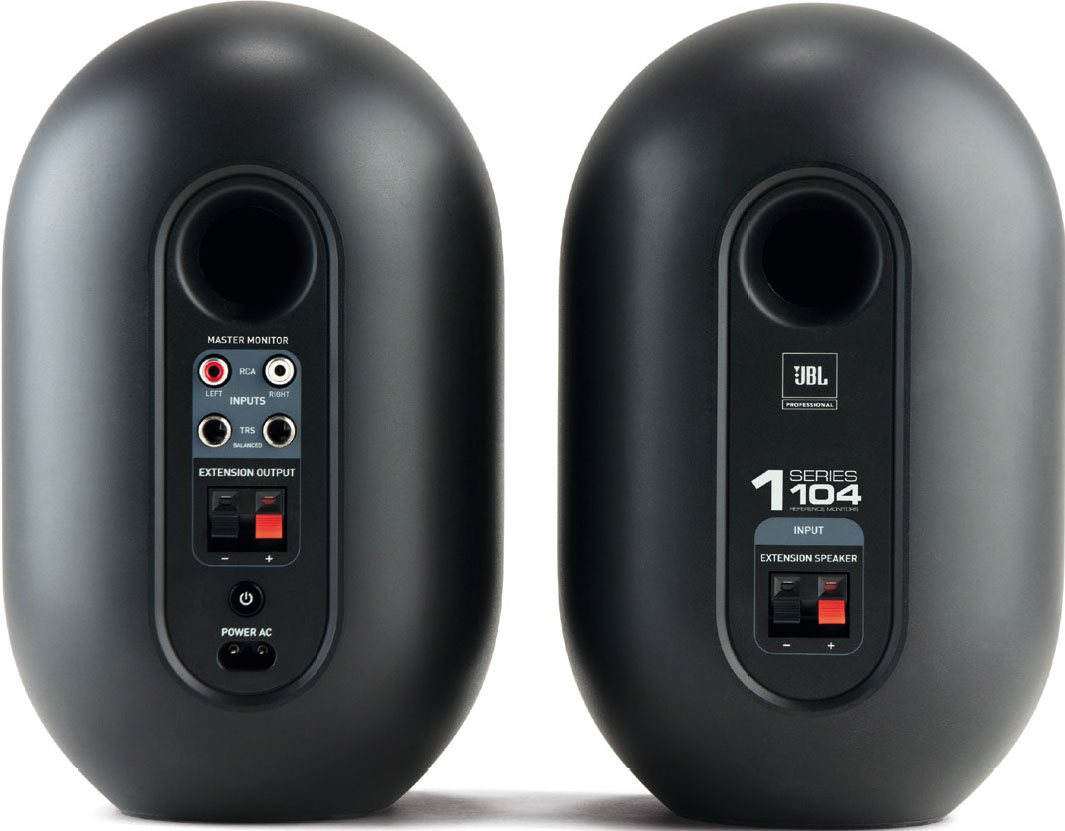
Price: £129 per pair (retail)
When you are recording music or other audio it is always vital to be able to check the overall balance and mix of the sound with an accurate and unbiased monitor speaker system. Conventional hifi speakers are designed to flatter the listener's aural experience by artificially boosting the bass and treble end of the spectrum. This might be fine for general listener enjoyment but not when you are making precise decisions during the mixing and mastering of audio. In fact, if you were to use standard stereo speakers for your mixing, with their enhanced bass and treble, then it is likely that the mix you produced would actually lack bass and treble response because you had been auditioning the artificially enhanced version from those speakers. Studio monitors, on the other hand, are designed to produce an accurate flat response across the aural spectrum without artificially ‘sweetening’ the sound. JBL is well respected in the audio technology field, and professionals use their products worldwide. Purchasing professional studio monitors can be a very expensive proposition so it is exciting that JBL has released its ‘One Series 104 Monitors’ at such an affordable price.
Setting Up
When you first open up the box you find two oval-shaped black monitors that have been designed with a flat rubber base to sit securely on a desk or shelf. The rubber area, cleverly, also helps to remove unwanted vibrations. The monitors have a pleasing look and although largely of plastic construction they feel solidly built with a front metal grill to protect the speaker drivers. One of the two speakers is the ‘Master unit’ containing the amplifier and all of the inputs, with the other being a passive extension speaker. Setting up is very simple. You just link the two speakers with the supplied cable and then connect the power plug. The monitors are designed to only stand upright and the volume control is mounted on the front that lights up when powered, an aux socket for plugging in phones, laptops, tablets or mp3 players and a headphone socket that mutes the speakers when connected. At the rear there are two quarter-inch (TRS) inputs for audio interfaces or mixers and these connections can either balanced or unbalanced. There are also RCA Phono inputs for connecting domestic equipment such as CD players.
Quality and Specifications
I played various pieces of music from wildly different styles through the JBL 104s and I was immediately impressed by the clarity of the lower and upper ends of the frequency range from such compact monitors. The internal speakers themselves are a coaxial design so the high-frequency driver (tweeter) is placed in the centre of the low-frequency driver (woofer), which means the music emanates from the same point of each speaker – this has been designed to produce a truer response and wider sweet spot from which one can listen. The speakers are a ported design (it has a hole in it!) and this is necessary to enable such small monitors to output low frequency range right down to 60Hz. At the same time, the upper register is similarly impressive with a high-frequency range of up to 20kHz. The full bass end of the spectrum certainly impressed me and they certainly did not sound like small speakers. The power output is a total of 60 watts, 30 watts to each speaker, so they produce ample volume levels.

The master monitor houses the inputs
Practical Usage
I can see a wide range of uses for the Series 104 monitors, and as they are so affordable, they should be very appealing to the educational market. They are ideal for small studio installations for both recording and mixing and can be used in compact spaces. And, because they are so compact, they will also be very useful in mobile recording situations. They are perfectly suited for computer workstations and additionally they would be excellent for any budding podcasters or video makers out there. I believe that JBL is planning to produce an optional protective carry case for these monitors – this would be a sensible accessory to buy when it is released, especially if you're intending on regularly transporting them.
Conclusion
I am happy to give wholehearted recommendation to these excellent compact JBL speakers and I liked them so much that I actually decided to purchase a pair for myself. They look and sound excellent; they suit a wide variety of uses and seem very solidly constructed. Overall, I think this is a great product at an excellent price that is bound to prove very popular indeed both within and without the education market.




